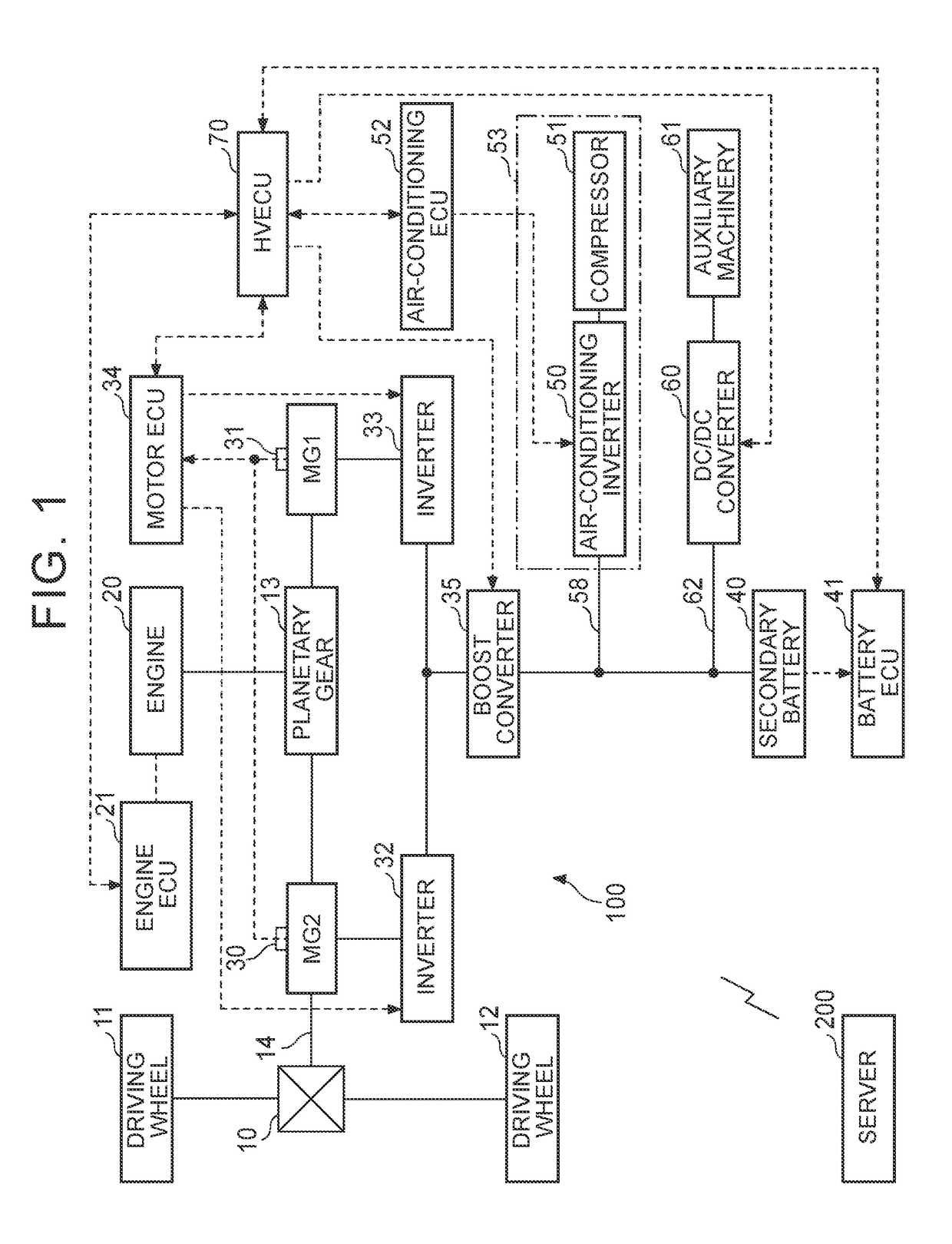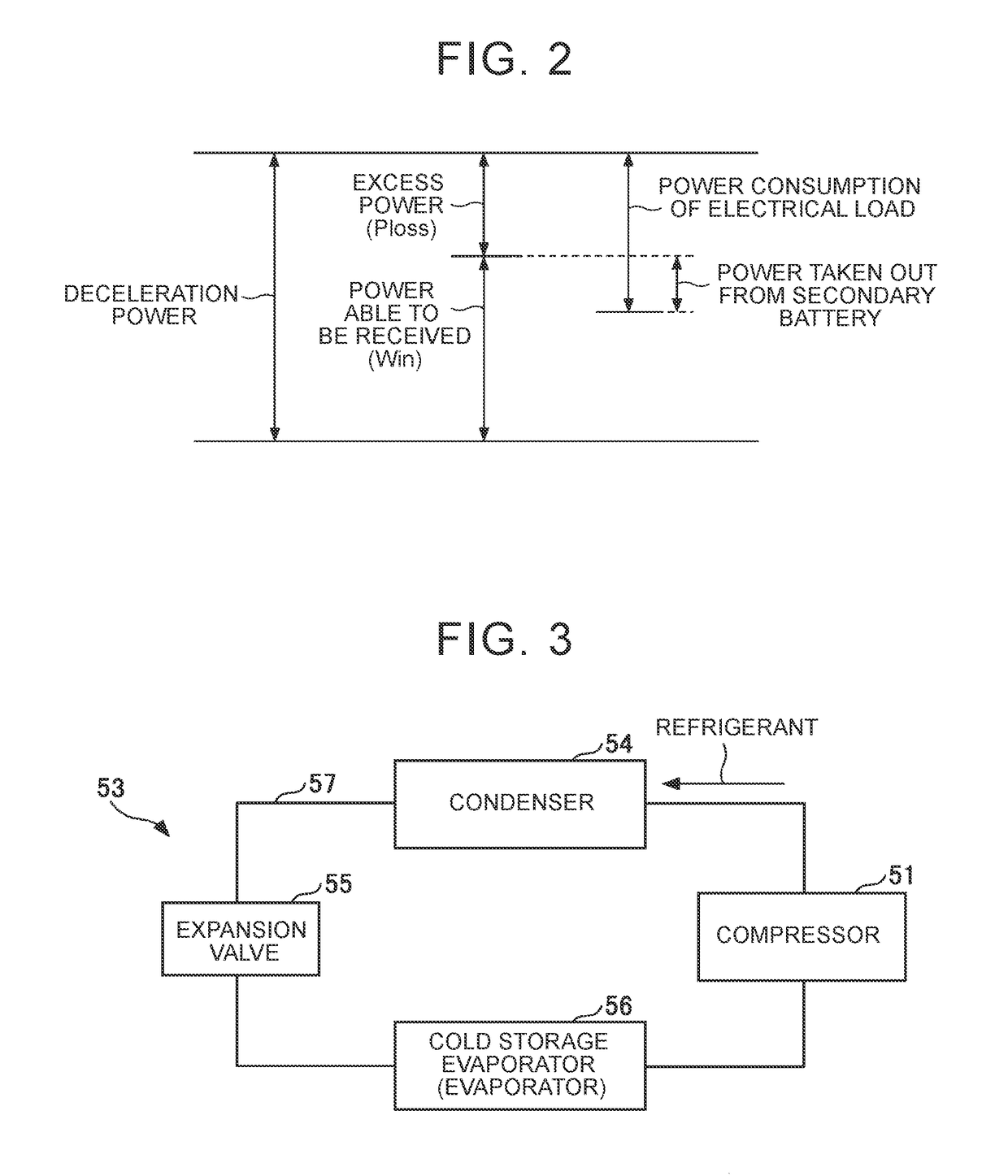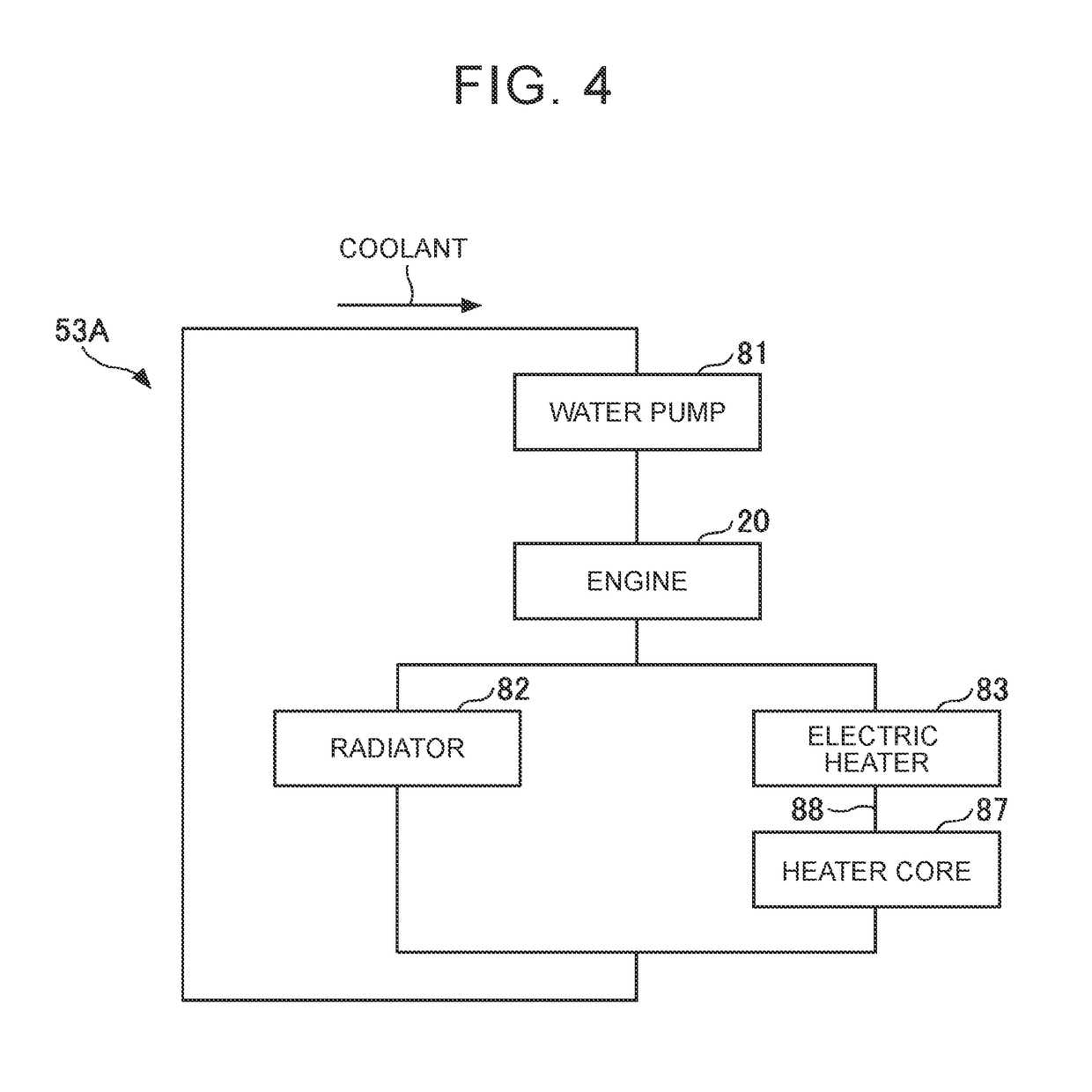Control system for vehicle
a control system and vehicle technology, applied in the direction of battery/fuel cell control arrangement, transportation and packaging, propulsion parts, etc., can solve the problems of reducing the electric power use efficiency of the vehicle as a whole, limiting the electric power supplied from the secondary battery to the electrical load, and affecting the electric power use efficiency of the vehicle. , to achieve the effect of improving the electric power use efficiency of the vehicl
- Summary
- Abstract
- Description
- Claims
- Application Information
AI Technical Summary
Benefits of technology
Problems solved by technology
Method used
Image
Examples
first embodiment
[0085]FIG. 6 is a flowchart illustrating an example of a process flow of air-conditioning control by the air-conditioning ECU 52.
[0086]The air-conditioning ECU 52 repeatedly performs processes from the start to the end illustrated in FIG. 6 at predetermined intervals.
[0087]In Step S3, the air-conditioning ECU 52 determines whether the air-conditioning device 53 in operation is in a warm-up state or a cool-down state. When it is determined that the air-conditioning device 53 in operation is in a warm-up state or a cool-down state, the air-conditioning ECU 52 does not allow the air-conditioning device 53 in operation to perform air-conditioning control in consideration of the power able to be received Win (Step S7). When it is determined that the air-conditioning device 53 in operation is not in a warm-up state or a cool-down state, the air-conditioning ECU 52 allows the air-conditioning device 53 in operation to perform air-conditioning control in consideration of the power able to b...
second embodiment
[0100]FIG. 8 is a flowchart illustrating an example of a process flow of air-conditioning control by the air-conditioning ECU 52. The air-conditioning ECU 52 repeatedly performs processes from the start to the end illustrated in FIG. 6 at predetermined intervals.
[0101]In Step S11, the air-conditioning ECU 52 acquires a target blowout temperature TAO and a measured indoor temperature Tr. The target blowout temperature TAO indicates a target value of the temperature of air which is blown to the vehicle interior by the air-conditioning device 53 and is set depending on a request from a user. The request from the user is input from an on-board interface unit (for example, a switch, a touch panel, or a microphone) that receives the request from the user. The measured indoor temperature Tr indicates a measured temperature of the vehicle interior.
[0102]In Step S13, the air-conditioning ECU 52 calculates an air temperature difference ΔTA between the target blowout temperature TAO and the me...
third embodiment
[0123]FIG. 11 is a flowchart illustrating an example of a process flow of the air-conditioning control in consideration of the power able to be received Win according to a third embodiment. FIG. 11 illustrates a process flow of performing process details of Step S27 in FIG. 8.
[0124]In Step S220, the HV ECU 70 calculates required deceleration power Pr which needs to be generated in the drive shaft 14 in decelerating the vehicle and acquires a power able to be received Win from the battery ECU 41.
[0125]In Step S221, the HV ECU 70 calculates excess power Ploss by subtracting the power able to be received Win from the required deceleration power Pr.
[0126]In Step S222, the HV ECU 70 determines whether the excess power Ploss is equal to or greater than a predetermined threshold value B. The threshold value B is set to, for example, zero.
[0127]The HV ECU 70 performs the process of Step S223 when the excess power Ploss is equal to or greater than the threshold value B, and performs the proc...
PUM
 Login to View More
Login to View More Abstract
Description
Claims
Application Information
 Login to View More
Login to View More - R&D
- Intellectual Property
- Life Sciences
- Materials
- Tech Scout
- Unparalleled Data Quality
- Higher Quality Content
- 60% Fewer Hallucinations
Browse by: Latest US Patents, China's latest patents, Technical Efficacy Thesaurus, Application Domain, Technology Topic, Popular Technical Reports.
© 2025 PatSnap. All rights reserved.Legal|Privacy policy|Modern Slavery Act Transparency Statement|Sitemap|About US| Contact US: help@patsnap.com



